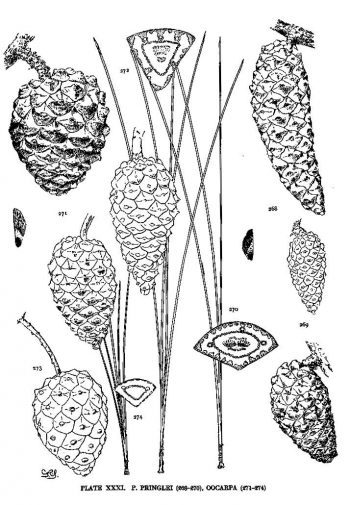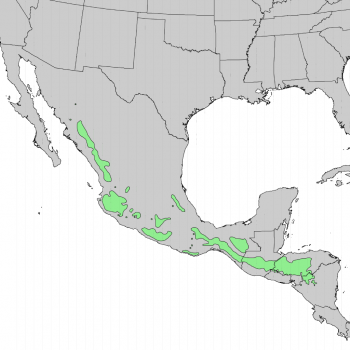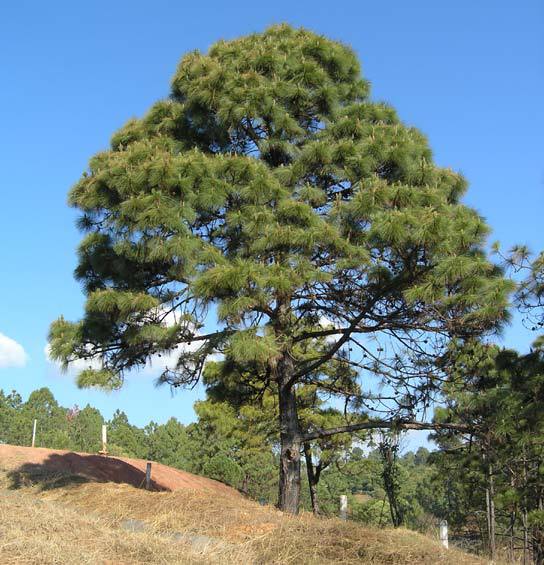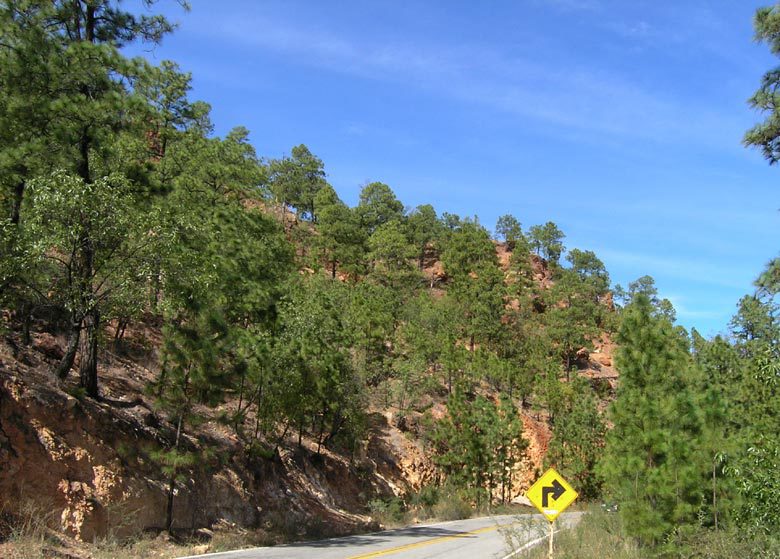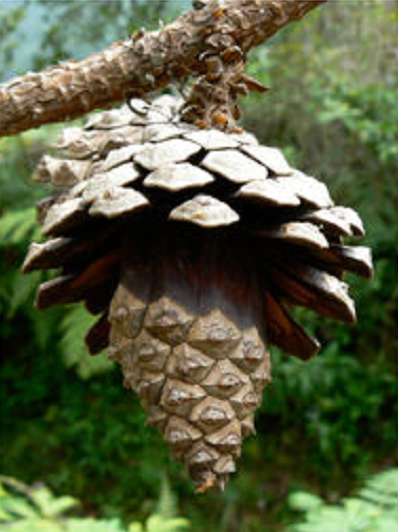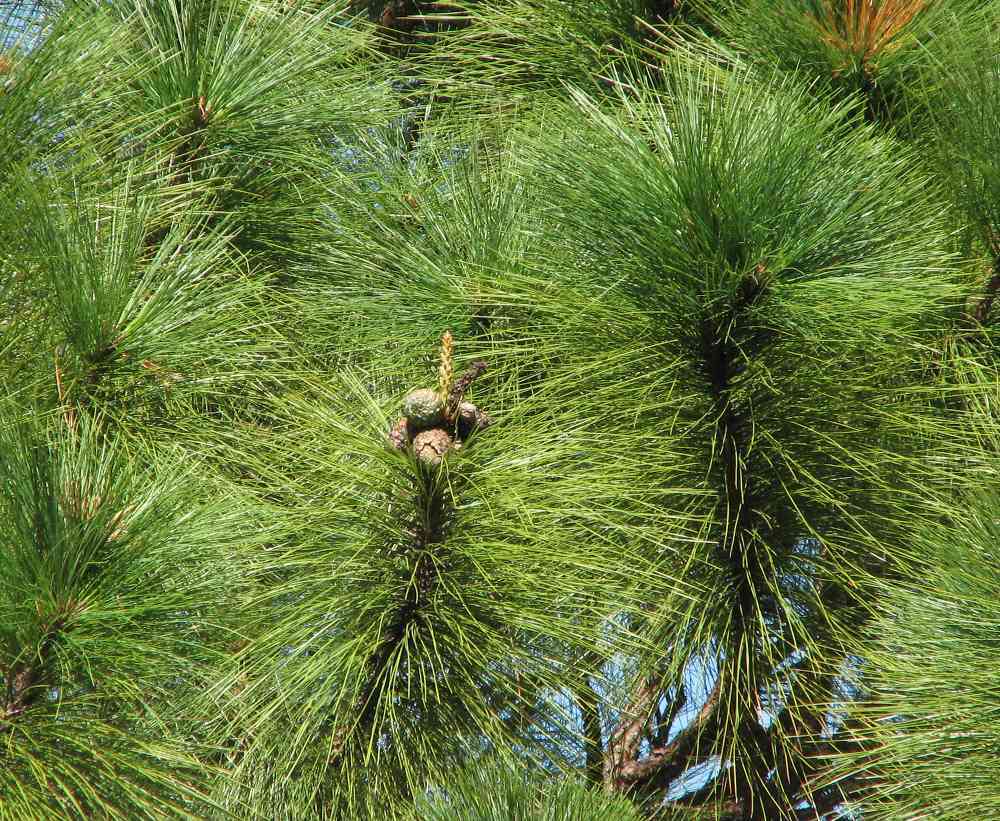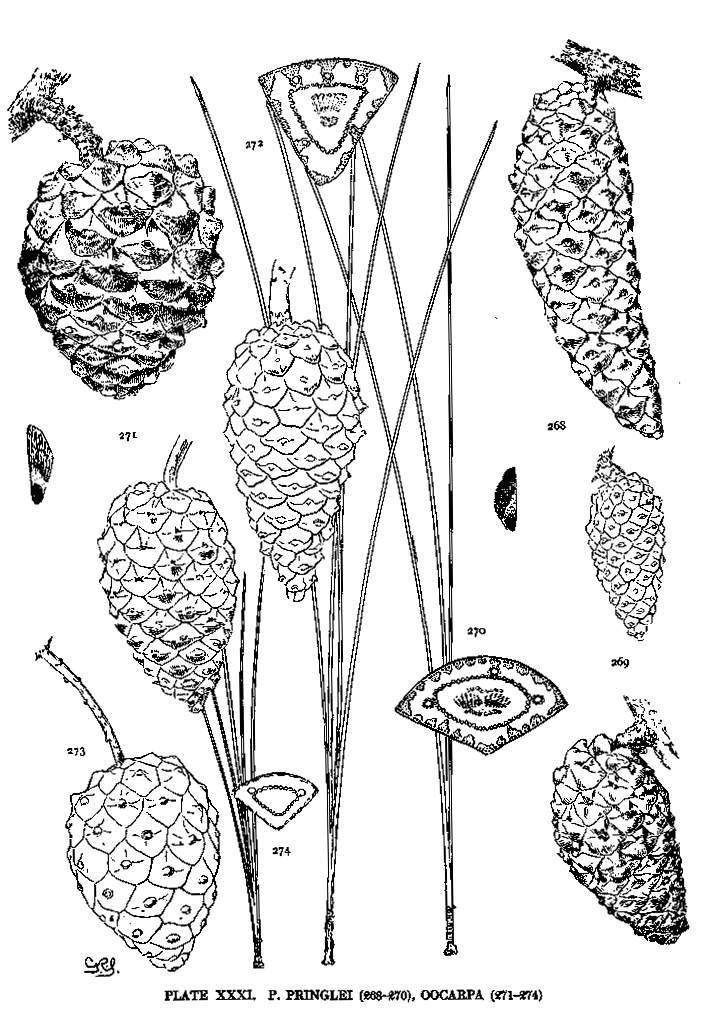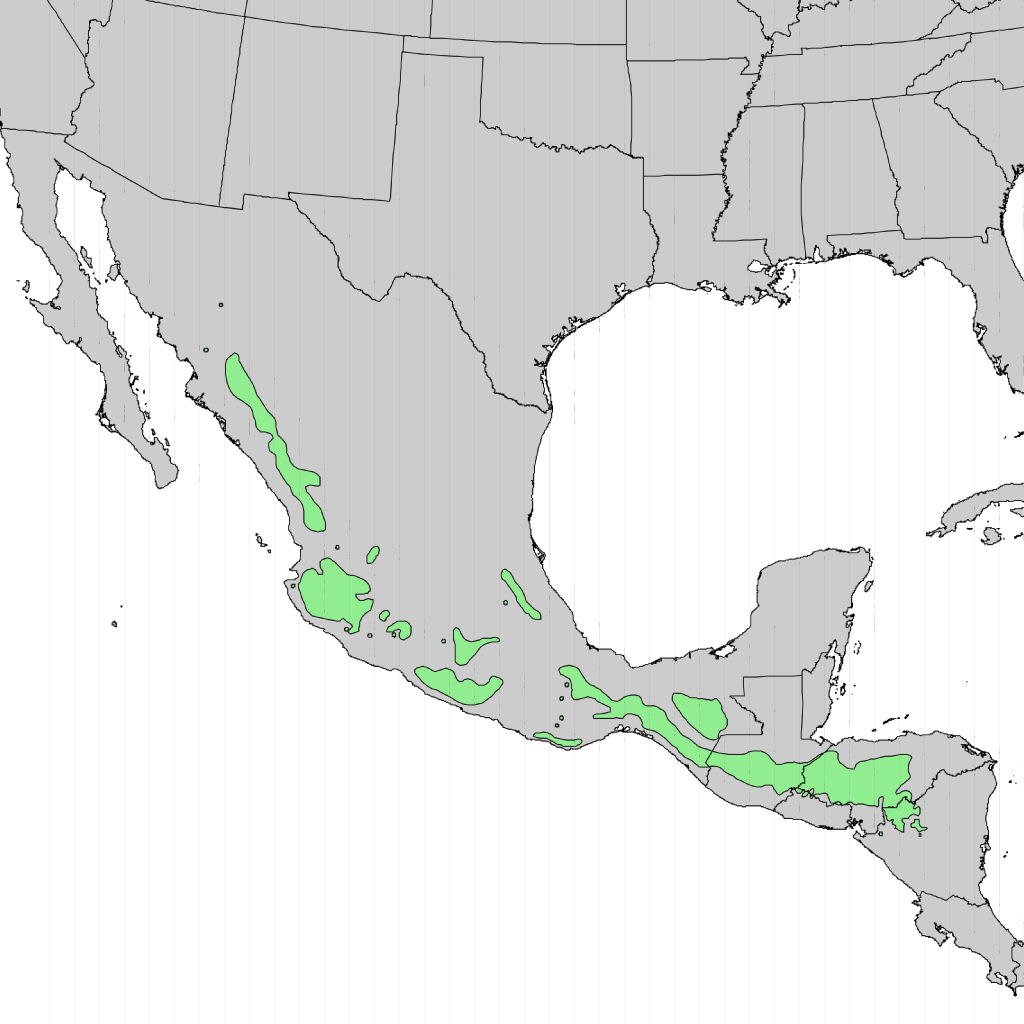subgenus Pinus, section Trifoliae (Duhamel), subsection Australes (Loudon).
Pinus oocarpa, first described in 1838 by Christian Julius Wilhelm Schiede (1798-1836) ex Diederich Franz Leonhard von Schlechtendal (1794-1866), is commonly known as Mexican yellow pine; as well as, Pino de colorado, pino de ocote, pino prieto, or pino amarillo in the Spanish language. The species name translates into "egg fruit" in the Latin language, a reference to the shape of the immature seed cones and the fact that they remain unopened on the tree for a long time.
Description. Mexican yellow pine is an evergreen coniferous species of tree that grows to mature heights of 125 feet (40 m); with a trunk up to (1.2 m) in diameter, measured at breast height; and a broadly dome-shaped crown with irregularly forked, upraised branches, clothed with foliage only at the tips.
- Bark is dark grayish brown in color, thick and rough with irregular scaly ridges, broken up into elongate plates by shallow furrows.
- Twigs are reddish brown in color, hairless, initially rough with the bases of scale leaves that flake off during or after their second season.
- Foliar buds are 0.48 to 1 inch (12 - 25 mm) long and not resinous.
- Leaves (needles) are bundles of 5 (sometimes 3 or 4), each measures 6.8 to 10 inches (17 - 25 cm) long, usually thick, stiff and straight, persisting 2 to 3 years on the tree. Needles are light green to yellowish green in color with a few inconspicuous lines of stomata on all three faces.
- Foliar sheaths are 0.72 to 1.08 inches (18 - 27 mm) long and persist on the tree for the life of the foliar bundle.
- Pollen cones measure (15 - 20 mm) long, colored yellowish brown with a reddish blush.
- Seed cones measure 1.2 to 3.2 inches (3 - 8 cm) long, very broadly egg-shaped to almost spherical when open, colored green when young, ripening light to dark yellowish brown, opening only gradually, but ultimately very widely when ripe, remaining attached to the tree for several years before falling along with its long, slender, curved peduncle.
- Cone scales number 40 to 100 per cone. They are very woody, irregularly rectangular in shape; the exposed face is roughly diamond-shaped to six-sided, fairly flat to strongly conically protruding, and tipped by a modest umbo usually bearing a tiny fragile prickle.
- Seeds are 0.12 to 0.32 inch (4 - 8 mm) long with a clasping wing, 0.48 to 0.72 inch (12 - 18 mm) longer that is strongly thickened toward the seed body.
Distribution. This species is native to Mexico, Guatemala, Honduras, El Salvador and NW Nicaragua, forming pure stands or mixed with other species in open, fire-prone pine-oak woodlands, growing at elevations of 4,000 to 6,500 feet (1,200 - 2,000 m) above sea level.
Hardy to USDA Zone 9 - cold hardiness limit between 20° and 30°F (-6.6° and -1.1°C).
